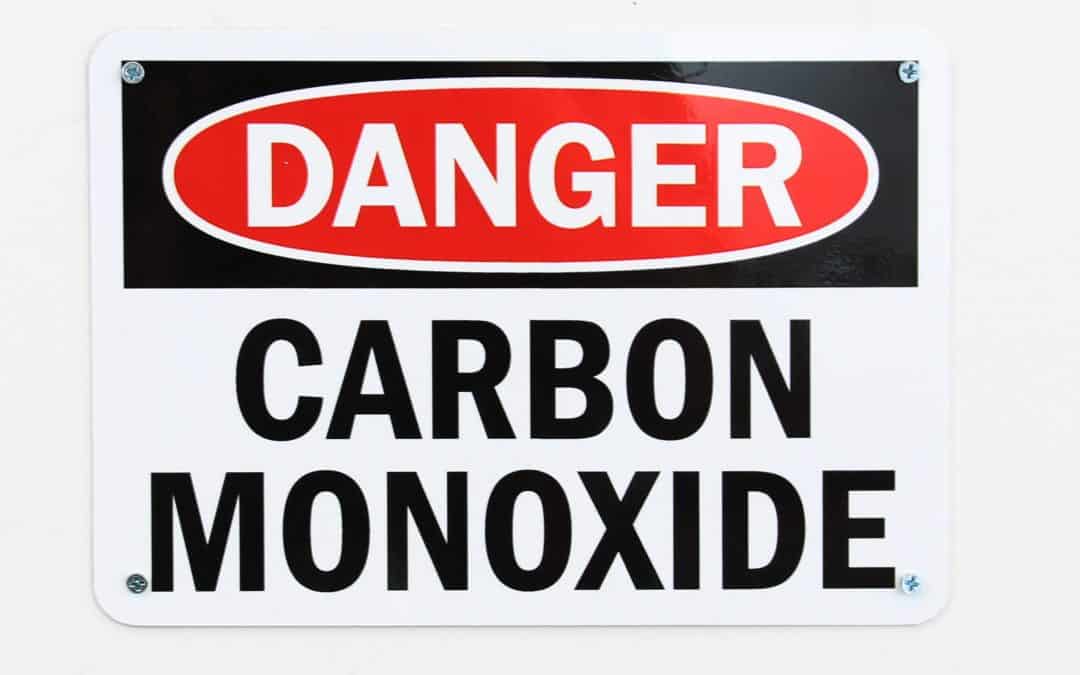By Keith Boggs
Posted December 16, 2019 at 4:00 pm CST
This past Thanksgiving turned terrifying for actress Anna Faris and 12 of her family members when they were exposed to toxic levels of carbon monoxide at their Lake Tahoe rental home. As the story has been told, multiple people started to feel bad, but they attributed their symptoms to altitude sickness. Fortunately, two in the group decided to get checked out at a local hospital. They were diagnosed with carbon monoxide poisoning, which quickly led to a similar diagnosis for others in the family.
Faris tweeted a picture of her abandoned Thanksgiving table along with a thank you to the North Tahoe Fire Department, whose firefighters measured carbon monoxide levels as high as 55 parts per million in the home, even with doors and windows open for ventilation. The maximum recommended indoor level is 9! Had the family gone to sleep, their Thanksgiving could have turned deadly. Fortunately, that disaster was averted.
Where does carbon monoxide come from?
Carbon monoxide is a gas found in fumes that are produced any time you burn fuel. It’s produced by cars, trucks, and other vehicles. It’s created when gas-burning generators and other small engines are used. It’s also produced by many household appliances, including gas-fired cooktops, furnaces, water heaters, clothes washers, and dishwashers. And if you have a gas fireplace or charcoal grill, carbon monoxide is created every time you fire it up.
Carbon monoxide is known as the “silent killer,” because it has no odor, no color, and no taste, yet when it builds up, it becomes poisonous — killing more than 400 people a year and sending more than 20,000 to the emergency room, with 4,000 getting hospitalized, according to the Centers for Disease Control and Prevention (CDC).
How will you know carbon monoxide is in your home?
The best way to know when this silent killer is lurking is to install carbon monoxide detectors near every sleeping area in your home, as recommended by the CDC. Check them regularly to make sure they’re functioning properly. And, if they’re battery operated or have a battery backup, replace the batteries according to the manufacturer’s instructions. A carbon monoxide detector will only set you back about $20. That’s a small price to pay for peace of mind.
You can also call a home inspection company to test your carbon monoxide detectors, inspect gas-fired appliances, and even measure the levels of carbon monoxide in your home. Just keep in mind that, if you don’t have carbon monoxide detectors, you and your family are at risk. The most common symptoms are often described as “flu-like” — headache, dizziness, weakness, upset stomach, vomiting, chest pain, and confusion. If you feel these symptoms, you might not realize what’s really happening. And sleeping people can die from carbon monoxide poisoning before they even have symptoms.
What month is the deadliest month for carbon monoxide poisoning.
Studies show the average daily death rate from carbon monoxide poisoning in January is three times the levels recorded in July and August. Obviously, that makes sense: Winter months are more hazardous in this respect, because gas-fired heating systems, fireplaces, and generators are in use, and people are likely to take risks to have power and heat during outages. So, as the new year approaches, this can be a good time to evaluate how well-prepared you are to meet and defeat the silent killer that is carbon monoxide.
How can you prevent carbon monoxide poisoning?
Here are some of the top tips from the CDC:
- Install a battery-operated or battery back-up carbon monoxide detector in your home on each floor and near each sleeping area. Check or replace the battery when you change the time on your clocks each spring and fall. And replace your detector every five years.
- Have your heating system, water heater, and any other gas-, oil-, or coal-burning appliances serviced by a qualified technician every year.
- Have your chimney checked or cleaned every year. Chimneys can be blocked by debris, which can cause carbon monoxide to build up inside the home. And always make sure the fireplace vent is open before lighting a fire.
- Never use a gas cooktop or oven to heat your home, and never burn charcoal or use a portable gas camp stove indoors.
- Never use a generator inside your home, basement, or garage or less than 20 feet from any window, door, or vent.
Carbon monoxide poisoning is preventable! With just a few simple precautions, you can stop this killer in its tracks. And if you have any concerns about carbon monoxide in your home, Stonebriar Property Inspections can perform carbon monoxide testing. Please reach out to learn more about how we can help.
Image Credit: SmartSign via flickr
About Keith Boggs
Keith Boggs is the owner of Stonebriar Property Inspections. He is your personal home inspector, and his investment in the company will be reflected in the quality of your inspection. Mr. Boggs’ inspection reports are professional, comprehensive, detailed, and clear. They average about 70 pages and include 80 to 100 color images and include detail findings and recommendations along with tips and best practices for maintaining your home. Stonebriar Property Inspection’s customer reviews speak to Keith’s reputation as an ethical, reliable, and courteous Dallas home inspector. Stonebriar Property Inspections is a proud member of the Better Business Bureau with an A+ rating. SPI is fully licensed by the Texas Real Estate Commission for home inspections and the Texas Department of Agriculture for termite/wood destroying insect inspections.


